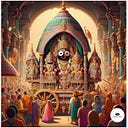Member-only story
Java has been a cornerstone of enterprise software development for decades. With each release, the language evolves, offering developers new tools, performance improvements, and features. Java 8, 11, 17, and 21 are among the most widely discussed versions due to their Long-Term Support (LTS) status or major enhancements. Here’s an in-depth comparison of these versions:
1. Java 8: The Revolutionary Update (2014)
Java 8 was a game-changer that introduced several major features, making it one of the most popular Java versions to date.
Key Features:
- Lambda Expressions: Enabled functional programming, allowing concise syntax for anonymous functions.
- Stream API: Simplified collection processing with functional-style operations like
map,filter, andreduce. - Default Methods: Allowed interfaces to have method implementations, ensuring backward compatibility.
- Optional Class: Helped avoid
NullPointerExceptionby providing a container for potentially null values. - Date and Time API: Introduced
java.timepackage, replacing the outdatedjava.util.DateandCalendarclasses. - Nashorn JavaScript Engine: Embedded JavaScript runtime.
Use Case:
Java 8 is ideal for applications requiring extensive use of functional programming and modern collection processing.
